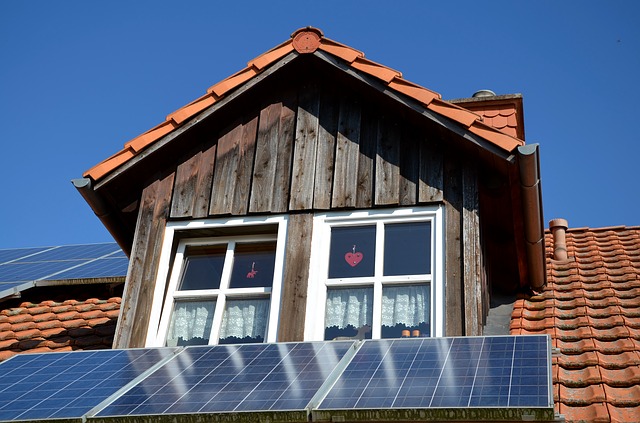Want to know a little more about the solar feed-in tariff in Queensland?
When it comes to solar systems for residential areas, the benefits are huge (but we likely aren’t telling you something you already know). From the financial benefits to the environmental advantages and everything in between, solar power installations are a great addition to your home, no matter where you live.

But what happens when your solar system converts energy into electricity, and it isn’t used in your home? Where does it go? Do you have to pay for it? Is it wasted? This is where the feed-in tariff comes in, and we thought we’d put a little information together about how it works, what it is and whether you are eligible for this payment. If you have any questions, give Fallon Solutions a call on 1300 762 260 and we can help.
What is a feed-in tariff?
A feed-in tariff is an amount paid to a homeowner by an electricity provider after unused electricity from their solar power system is sent to the electricity grid and is usually found on your electricity bill. In Queensland, solar feed-in tariffs in places like Brisbane, the Sunshine Coast and Gold Coast are covered by ‘Voluntary Retailer Contributions’, which means that an electricity provider does not have to pay anything for exported electricity to the grid (but they normally do).
Types of feed-in tariff
There are two different kinds of solar feed-in tariffs, known as net feed-in and gross feed-in. Net feed-in tariffs are where you get credited for the amount of electricity over what you use, whereas gross feed-in tariffs are when your retailer credits you for all the electricity your solar system feeds into the grid, and then charges you separately for all the electricity you use.
Net feed-in tariffs are the kind that is used in Queensland, Victoria, South Australia and Tasmania, whereas gross feed-in tariffs are used in the ACT and the Northern Territory. In New South Wales, retailers can choose to use either net feed-in or gross feed-in, so both options are utilised.
Who is eligible for a feed-in tariff?
Most people who have a solar system installed at home are eligible for a feed-in tariff, as long as it exports unused energy to the electricity grid.

When it comes to regional areas, eligibility requirements include:
- Your inverter must not have a capacity above 30kW
- Consume less than 100-megawatt hours of electricity a year (the average household consumes around 6.1MWh a year)
- Not be receiving any other tariff
- Be connected to the electricity grid
- Be a retail customer of either Ergon Energy or Origin Energy (if you’re connected to the Essential Energy network)
Check out the Queensland Government tariff page for full regional eligibility requirements.
How much is a feed-in tariff?
The feed-in tariff amount is based on a few things, including :
- Where you are located (e.g. regional or inner-city)
- The type of solar system you have
- The amount, if any, your state or territory government has set
- Whether your retailer adds more to what the government has set
What are the market feed-in tariffs for South East Queensland?
This really depends on a range of different things. As feed-in tariffs are voluntary in southeast Queensland, electricity providers offer differing feed-in tariff rates, so it’s really important to check out all options before making a decision. The Queensland Competition Authority are the entity that keeps an eye on feed-in tariff offerings across SEQ (as a component of their bigger price monitoring role) and does provide some options based on usage, so take a look if you are considering comparing prices.

If you are searching for your current feed-in tariff, take a look at your most recent electricity bill. It should be listed and must be considered together with your overall household electricity usage.
What are the regional Queensland feed-in tariffs?
In regional and remote areas of Queensland, there is a fixed feed-in tariff for everyone except Ergon Energy customers, who receive a time-varying feed-in tariff. For the 2019-2020 financial year, the buyback rate as set by the Queensland Competition Authority is 7.842 cents, however, this changes every financial year. The Queensland Government tariff page has further information regarding this.
What about the Solar Bonus Scheme?
The Solar Bonus Scheme was introduced in 2008, offering a 44c feed-in tariff to particular Queensland residents that applied to install rooftop solar systems before 10th July 2012. The Solar Bonus Scheme is no longer accepting new customers, however, if you currently receive this tariff rate and maintain your eligibility, you can receive this rate until 1 July 2028 (the expiry date of the Scheme). Head over to the Queensland Government Solar Bonus Scheme site for more information.
Your local electrical professionals
If you have any questions, or would like to arrange for one of our qualified electricians to attend your home or office, give Fallon Solutions a call on 1300 762 260 or book online now. We are your friendly experts when it comes to all your electrical needs, so get in contact today!
Resources :
Queensland Government (How feed-in tariffs work): https://www.qld.gov.au/housing/buying-owning-home/energy-water-home/solar/feed-in-tariffs/how-feed-in-tariffs-work
Queensland Government (Feed-in tariffs for regional Queensland): https://www.qld.gov.au/housing/buying-owning-home/energy-water-home/solar/feed-in-tariffs/feed-in-tariff-regional-queensland
Queensland Government (Market feed-in tariffs in South East Queensland): https://www.qld.gov.au/housing/buying-owning-home/energy-water-home/solar/feed-in-tariffs/market-feed-in-tariffs-seq
Queensland Government (Solar Bonus Scheme 44c feed-in tariff): https://www.qld.gov.au/housing/buying-owning-home/energy-water-home/solar/feed-in-tariffs/solar-bonus-scheme-44c
Solar Quotes (QLD Solar Feed In Tariff Information): https://www.solarquotes.com.au/systems/feed-in-tariffs/qld/
